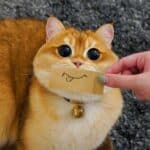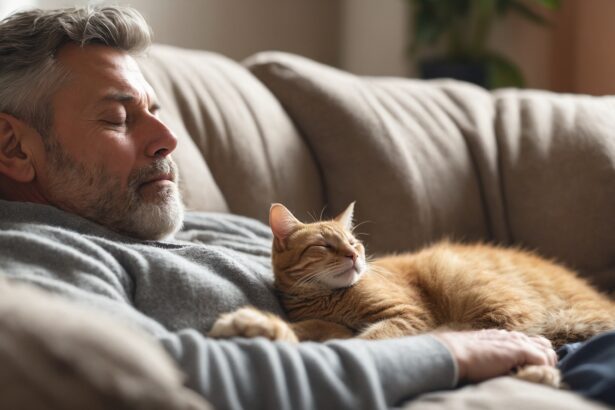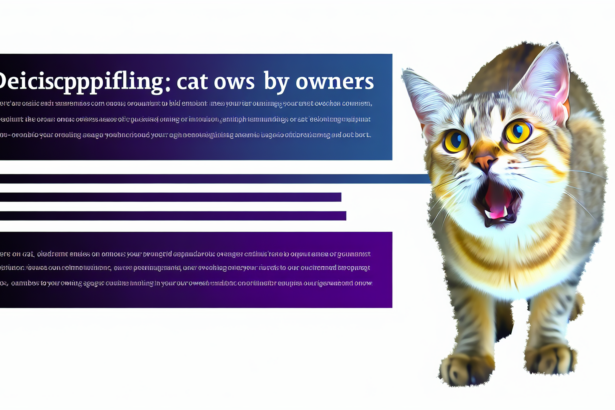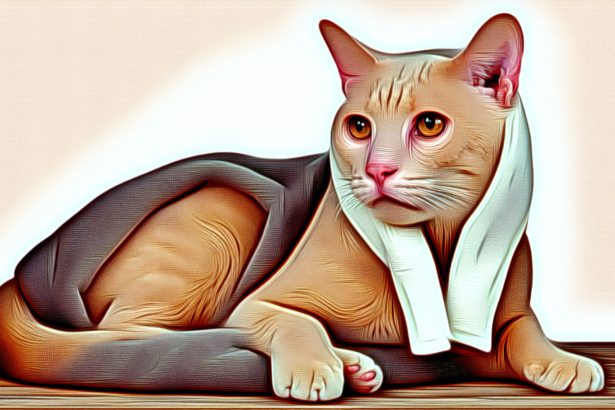Why does your cat knead: understanding this mysterious feline behavior
Why do cats knead? If you’re the proud owner of a feline, you’ve probably already observed this adorable and intriguing gesture. Your tomcat settles comfortably on your lap and starts kneading gently with his little paws. But what does this mysterious behavior really mean? Let’s find out together what’s behind this touching gesture!
- Why does your cat knead: understanding this mysterious feline behavior
- Kneading in cats: an instinctive gesture from birth
- A sign of affection: when your cat shows you his love
- Mixing as a way of marking your territory
- When mixing becomes excessive: is there cause for concern?
- How to deal with your cat’s pawing: practical advice for caring owners
- Welcoming your cat’s kneading
- Protect your clothes and furniture from scratches during mixing
- When and how to interrupt mixing gently
- Kneading your cat: unsuspected benefits for your favorite feline
- A relaxing gesture with multiple benefits
- Strengthen the bond between you and your cat with kneading
- Kneading and purring: a winning duo for feline well-being
- Myths and realities about kneading cats: untangling the truth from the falsehoods
- Is mixing always synonymous with happiness?
- Do all adult cats knead?
- Kneading and scratching: how to avoid injury?
- Conclusion: decipher mixing to better understand your cat
Kneading in cats: an instinctive gesture from birth
- Origin of kneading: from birth, kittens instinctively knead their mother’s belly to stimulate milk production. This natural reflex often continues into adulthood.
- A reassuring gesture: as an adult, your cat will continue to knead to rediscover the feeling of security and comfort felt during childhood.
- Emotional development: this gesture contributes to the kitten’s emotional development, enabling it to form a strong bond with its mother.
A little anecdote: my cat Luna always kneads her favorite cushion before falling asleep, as if to recall her sweet kitten memories. Adorable, isn’t it?
A sign of affection: when your cat shows you his love
- Why you? If your cat chooses you to knead, it’s because he sees you as a reassuring, almost maternal figure. What a wonderful proof of love!
- A sign of trust: this gesture shows that your cat feels safe and relaxed in your presence.
- Practical tip: to reinforce this emotional bond, take advantage of these moments to talk softly to your cat or stroke it gently. Your cat will love this strengthened bond!
Mixing as a way of marking your territory
- Scent glands: did you know that your cat has scent glands in its paw pads? By kneading, he subtly deposits his scent to mark his territory.
- Favourite objects: your cat often chooses specific places, such as its basket or your sofa, to leave its olfactory mark.
- Managing this behavior: to avoid damage, offer him suitable surfaces such as a plaid or a cushion specially designed for kneading.
To find out more about territorial behavior, read our article on why your cat scratches the furniture and what to do about it.
When mixing becomes excessive: is there cause for concern?
- Identify excess: if your cat kneads compulsively, for a long time or anxiously, it could be expressing stress or discomfort.
- Possible causes: changes in environment, loneliness, anxiety or boredom may explain this excessive behavior.
- Practical solutions: enrich his environment with interactive games and comfortable hiding places, and give him more attention to soothe him.
How to deal with your cat’s pawing: practical advice for caring owners
Welcoming your cat’s kneading
- Reassuring environment: offer him a cozy, quiet space where he can knead to his heart’s content.
- Common mistake to avoid: never punish or push your cat away abruptly when she’s kneading, as this could stress her or alter your relationship.
- Original tip: place a soft blanket on your lap to protect your skin and make this moment pleasant for both of you.
Protect your clothes and furniture from scratches during mixing
- Essential accessories: choose sofa protectors, thick plaids or cushions specially designed to resist scratches.
- Encourage good surfaces: reward your cat for kneading on suitable surfaces to reinforce this good behavior.
- Avoid damage: gently redirect your cat to authorized areas as soon as he starts to knead elsewhere.
When and how to interrupt mixing gently
- Recognize the right moment: if kneading becomes painful or awkward, gently divert his attention.
- Gentle techniques: offer him a toy or treat to encourage him to stop without frustration.
- Protecting your cat’s well-being: always remain calm and patient to avoid upsetting your cat.
Kneading your cat: unsuspected benefits for your favorite feline
A relaxing gesture with multiple benefits
- Stress reduction: kneading releases soothing hormones that help your cat relax deeply.
- Mental and physical health: this gesture promotes restful sleep and improves overall well-being.
- Encourage this behavior: let your cat knead regularly to maintain its emotional balance.
Strengthen the bond between you and your cat with kneading
- Make the most of it: turn these moments into special cuddles to strengthen your bond.
- Mistake to avoid: never show impatience or annoyance during these precious moments.
- Tip: combine kneading with gentle caressing to reinforce your complicity.
Kneading and purring: a winning duo for feline well-being
- Link between kneading and purring: these two behaviors are often associated, expressing a state of intense happiness in your cat.
- Combined benefits: purring combined with kneading promotes deep relaxation and better overall health(scientific source).
Myths and realities about kneading cats: untangling the truth from the falsehoods
Is mixing always synonymous with happiness?
- No, sometimes it also expresses stress or anxiety.
- Observe your cat’s overall body language to better understand its emotions.
Do all adult cats knead?
- No, some adult cats never knead, and that’s nothing to worry about.
- Genetic, environmental and personal factors influence this behavior.
Kneading and scratching: how to avoid injury?
- Your cat instinctively pulls out its claws to get a better grip.
- Trim claws regularly or use suitable claw guards.
Conclusion: decipher mixing to better understand your cat
Why do cats knead? This fascinating gesture reveals a lot about your feline companion. By better understanding this behavior, you can strengthen your bond and improve your cat’s daily well-being. To discover other feline secrets, read on at Pawtounes.fr!







